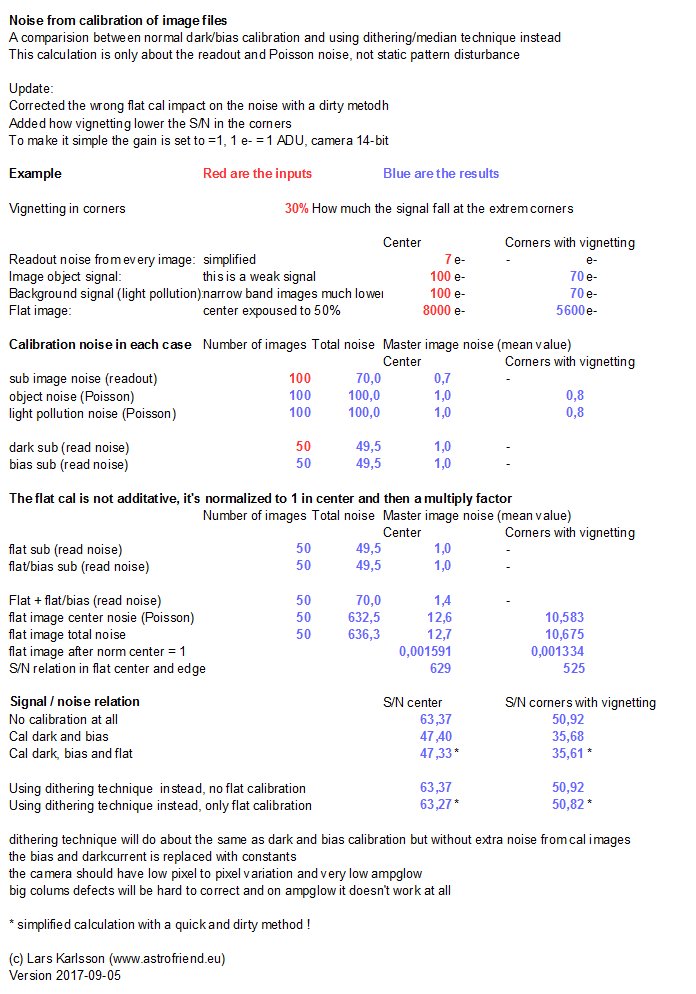|
Advertisement / Annons: |
Tutorial:
|
Content:
Page III |
3.1: Sigma clippingWhen you are finished with your sub images you have to align and stack them in your favorite software with a Sigma Clipping/Rejecting or Median function or similar. Here are the software that I'm used to work with, they are old today but free. I believe most of the astrophoto edit software can do this.
I normally use the standard setting, but for you it could be different. Even if I haven't done it here you should still do a flat calibration.
Update: If you want to read more about dithering Lasse H. has provided some links here:
|
3.2: Calculation of calibration noiseHow much better will the signal / noise relation be with dithering instead of dark calibration?
Update: Here is an (new) attempt to show a common situation: 
The weak signal could be a nebula or a galaxy. Random noise from dark, bias, flat and flat/bias calibration images is thought to be only readout noise, in flat also Poisson noise.
Note: But still you get an idea about why it's better to use dithering instead of dark image calibration under some circumstances. There are noise added even with dithering and one source of it are that different pixels are used, and they're not exactly the same, it's a static error but since dithering is random it appears as a noise. But anyway, you always use different pixel because the tracking normally don't is that exact. Some cameras are more suitable than others. Specifically, the static errors should not be in big areas, small in the area distribution. There should not be any amp glow as in old cameras. Pixel to pixel variation should of course be low as well. Here you can download the Excel file above if you want to put in your own values for a test:
NOTE! Here you can read why we get noise from the object and background itself:
|
| Go Back |